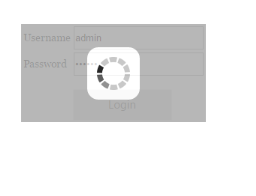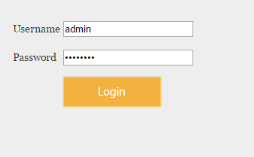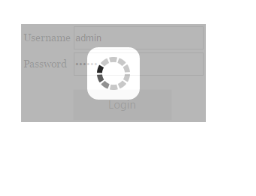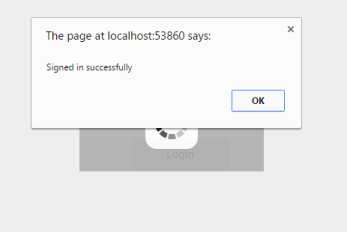Overview in ASP.NET MVC WaitingPopup
18 Aug 20235 minutes to read
The WaitingPopup control for MVC is a visual element that provides support for displaying a pop-up indicator over a target area and preventing the end user’s interaction with the target area while loading.
Key Features
- Custom text: Supports custom text inside the pop-up panel.
- Template: Supports including HTML content instead of the default image.
- Transparency: Supports customizing the transparency and opacity level.
- Themes: JavaScript controls include 12 built-in themes (6 flat and 6 gradient effects) and also support the custom skin option to set user-defined themes.
Getting Started
This section explains briefly about how to create a WaitingPopup in your application with ASP.NET MVC.
Create your first Waiting Popup in MVC
ASP.NET MVC Waiting Popup provides support to display Waiting Popup within your web page. From the following guidelines, you can learn how to create a Waiting Popup in a real-time Login page scenario. This helps you in authentication model. The following screenshot illustrates the functionality of a Waiting Popup in a Login page scenario.

In the above screenshot, you can give the Username and Password. When you click the Login button, the Waiting Popup appears. After loading, the alert box appears with a message “Signed in successfully”.
Create Waiting Popup
ASP.NET MVC Waiting Popup widget has a built-in feature to block all other actions until the page is loaded. You can easily create the Waiting Popup control by using simple HTML Helper element as follows
- You can create an MVC Project and add necessary assemblies, styles, and scripts with the help of MVC-Getting Started Documentation.
Create Login Page
In a real-time Login page scenario, when you click on the Login button, the Waiting Popup is displayed. This is achieved by using the button Click.
-
Add the following code example to the corresponding view page to create Login page with username and password.
<div class="content-container-fluid"> <div class="row"> <div class="cols-sample-area"> <table id="target"> <tr> <td>Username</td> <td><input type="text"></td> </tr> <tr> <td>Password</td> <td><input type="password"></td> </tr> <tr> <td></td> <td> @Html.EJ().Button("button").Text("Login").Size(ButtonSize.Large).ClientSideEvents(e =>e.Create("load").Click("Click")) </td> @Html.EJ().WaitingPopup("target").ShowOnInit(false) </tr> </table> </div> </div> </div> -
Add the following styles in the view page to show the Waiting Popup.
<style type="text/css" class="cssStyles"> #target { margin: 0 auto; } #target_WaitingPopup .e-image { display: block; height: 70px; } #popup { height: auto; width: auto; margin-top: 100px; } </style> -
Add the following script in the view page.
<script> function Click(e) { var popup = $("#target").data("ejWaitingPopup"); popup.show(); setTimeout(success, 5000); } function success() { alert("Signed in successfully"); var popup = $("#target").ejWaitingPopup("hide"); } </script> -
The following screenshot displays the User login.

-
The following screenshot shows the Waiting Popup

The following screenshot displays an alert box displayed with the message “Signed in successfully” after loading.
